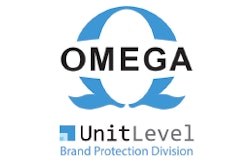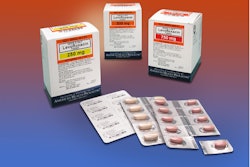Countless exhibitors at interpack 2011 showed they’ve been busy upgrading capacities, capabilities, connectivity, and the overall sophistication of their equipment. (See video shot at the show.) Also noticeable was that most of the large equipment suppliers and even some of the small ones have grown bigger and more vertically integrated. They’ve managed this in one of two ways: Organic growth, mainly by designing and building machinery to complement their core equipment, or acquisition of companies having complementary technologies and equipment. The exhibition was also marked by a growing presence of suppliers from Asia; it should be noted, however, that the Asian equipment builders—excluding those from Japan—typically showed a fairly standard range of machinery, including f/f/s, shrink packaging, labeling, cartoning, etc.
Vertical integration was a recurring theme at interpack 2011, partially in response to customer preference for turnkey lines. As this trend progresses, more large companies will offer a wider range of equipment than ever before.
Another preliminary note on the exhibition before diving into some specifics: Most suppliers indicated a nice pickup of orders in the recent past, especially since the beginning of 2011.
Mechatronics
Rapid transitioning from mostly mechanical to mostly servo-based equipment was very evident. Many suppliers are quickly expanding the use of traditional robots to all applications requiring picking and placing of components. For example, Norden Machinery (part of the Coesia group) presented a high-speed tube filler whose infeed section consists of robots picking empty tubes directly from the shipping boxes. This integration not only avoids intermediate operations that may cause jams and downtime, it also significantly simplifies and shortens changeover time.
There is a clear trend towards the use of Delta style modules, provided mostly by ABB, Fanuc, and Adept. Whereas previously they were used primarily for confectionery, they are now used very effectively for flexible packaging and high-speed sorting, orienting, and placing on the fly for many packaged goods.
Another new trend is incorporating in-house designed and built servo-driven mechanisms to positively transfer product from one machine to another machine on the same production line, thus never losing control of the product. Together with total line integration via one controller, these “smart” mechanisms have essentially turned what used to be considered a packaging “line” into a single machine. This trend was clearly seen on many pharmaceutical lines running at high speed. Marchesini and IMA presented such integration for transferring and collating blisters from f/f/s blister machines to cartoners at speeds exceeding 300 folding cartons/min.
Controls
The overriding trend in controls is full integration of all control software and hardware with machine functionality itself. To facilitate faster controls development and reduce troubleshooting time, the trend in software is focused on standardization. Broader use of the PackML state model was clearly in evidence. Machine builders hope to be able to deliver their customers faster training through standardized software instead of proprietary software, as well as through more use of “object oriented” programming and the creation of a large library of “objects.” Real-time diagnostics is something a lot of machine builders are aiming to provide.
To accomplish seamless integration of various functions, synchronize all equipment on the line, and minimize downtime, the trend in controls hardware is seen to be focused on:
• Scalability—“plug-and-play” technology is facilitating easier and faster component replacement
• Remote connectivity for remote maintenance and troubleshooting
• Shrinking the physical size and the cooling requirement of control cabinets; this is being accomplished by incorporating all the controls for the complete line in one centralized controller via extensive use of various field buses (mostly industrial Ethernet). Sharing of power supplies and greater use of distribution boxes, multi channel connectors, and remote I/Os are other strategies being deployed, as is the placement of servo drive and servo motor in one unit or form factor.
• Built-in redundancy of communication with each module on the line by “daisy- chaining” all the controllers, in addition to bi-directional loop to the central controller
As for trends in sensing and measuring instruments, two that stood out were remote connectivity and more use of miniaturized vision systems. Also, the sensors themselves are now more sophisticated and have more functionality. For example, Sick introduced a label and registration sensor that does not need a registration mark.
Product marking and coding
Many of the marking and coding suppliers—both ink-jet and laser—have introduced solutions for “late-stage customization” and serialization. Hapa, with a very flexible line of carton printing units, was among this group. So was Korber Medipac with its White Line concept: white, unprinted material goes in the front end and late-stage custom-printed packages come out the other end. Additionally, every supplier is now trending towards standardizing their control and monitoring software on one platform.
At Domino, a key benefit claimed is 10,000 hours of maintenance-free operation, owing largely to the introduction of ink cartridges with built-in filters. Not to be outdone, Videojet introduced a model 1610 that has two print heads and a model 1720 that works with a proprietary pigmented ink, thus resulting in higher resolution / higher contrast that leads to much better readability.
Atlantic Zeiser introduced their newest high-speed Omega ink-jet print head based on UV cured ink, and they combined it with a new UV LED curing technology (the LED is air cooled). The combination is claimed to assure best adhesion without using heat, and without additional head-cleaning systems.
An interesting on-demand Multi Roller printer/applicator was displayed by Espera. Each of the 5 roll “cassettes” can be removed and changed on the fly.
Cartoners
While the basic concepts have not changed, the following trends and developments were noticed:
• Most new horizontal cartoners are now “balcony” style.
• Operating speeds across the board are higher, due mainly to the incorporation of servo drives; however, even mechanical machines have higher speed capabilities. For example, CAM introduced its new-generation small horizontal cartoner, which is an intermittent mechanical machine with speeds up to 250/min. To accomplish such a feat, many borrowed techniques (gleaned from high-speed continuous cartoners) were incorporated.
• Machines are quiet, even at high speed.
• Loading components into the cartoner infeed has traditionally been done by mechanical means or gravity. This is giving way to mechatronics; in fact, many cartoners are utilizing Delta style robots for loading.
• While the low-cost cartoners are mostly mechanical, and many are now produced in developing countries, there were a number of sophisticated servo-driven cartoners made in some of these countries.
• To facilitate easy loading of folding carton blanks for its latest high-speed horizontal cartoner, Cariba cantilevered and positioned the infeed blank conveyor to below hip level.
• Bruner displayed its most flexible vertical cartoner, with a number of Delta style robots for loading.
• UET displayed a small rotary indexing vertical cartoner with easy changeover features such as one adjustment for all “pockets.”
Filling lines
When it came to filling and closing lines for pharmaceuticals and health and beauty products, one of the trends seen is the use of a linear indexing line comprising various independent functions/modules connected side by side and sharing one articulated conveyor and integrated controls. For example:
• Uhlmann introduced an integrated high-speed pharmaceutical bottle-filling line (liquid or solid doses) from bottle unscrambling to strapping of multiple cartons.
• Groninger introduced its DPS compact line, geared towards pharmaceutical products. The uniqueness of this modular machine is the container transport between the stations. This is done by one working robot. The line is especially suitable for short production runs or for the development of new concepts that can later be scaled up to high speeds.
• Schubert displayed a number of large production lines made of modules, such as the TLM series. The unique feature introduced at the show is an automated tooling changeover, a concept borrowed from automated machining centers used to fabricate parts.
• Tablet pressing was a popular technology on display. There were no real breakthrough technologies in pressing, but one unique innovation I saw was IMA’s introduction of an integrated check weighing system mounted right at the exit of the pills from the Synthesis 500 2G tablet press. The actual weigh mechanism was built by Mettler-Toledo.
• Serac introduced a new generation of high-speed rotary filler/ capper (FC), based on weigh cell technologies. The machine was radically redesigned to eliminate the tank on the top, be compliant with IP-65 washdown requirements, and permit faster changeover capabilities.
• Agami introduced an environmentally friendly thermoforming- blowing technology (“roll & blow”) to make bottles from a roll-fed material. Essentially, rather than melt large plastic pellets and use an extruder to create the “parison,” the Agami innovation is the equivalent of creating a parison from roll-fed material. A unique capability of this technology is the ability to use multi-layer plastic rolls, and thus perfectly match compatibility and barrier properties with various bulk materials.
• Rommelag introduced a high-speed machine for leak detection utilizing high voltage technology.
Can’t wait for interpack 2014, which has now been fixed for May 8-14. See you there.

























